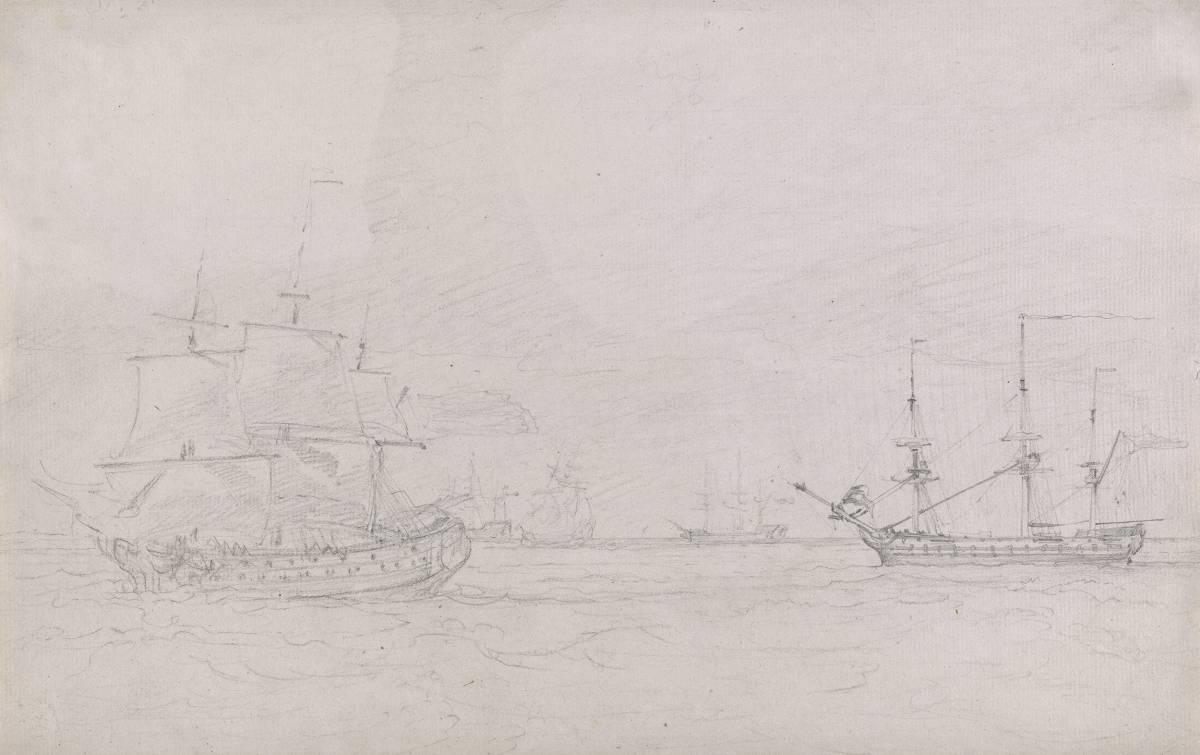This unusual sheet belongs to a group John Constable made in April 1803 during a voyage on the East Indiaman Coutts, commanded by his father’s friend Captain Torin. The voyage lasted nearly a month and he left the ship shortly before 6 May, when the Coutts sailed for China. In the confusion of leaving the ship he left his drawings behind but later recovered them. According to Constable’s early biographer, C.R. Leslie, there were about 130 in all. The drawings show Constable’s awareness of the work of Willem van de Velde. Drawn from the deck of the Coutts, the studies are carefully observed studies of shipping on the busy Kent coast, at the mouth of the Thames estuary. Van de Velde’s drawings were readily available in London in the early nineteenth century and Constable must have been aware of his practice of drawing and painting from onboard ships.
By 1803 Britain had been at war almost continually for a decade. This sheet neatly illustrates British naval strength, capturing Constable's fascination for the minutiae of rigging on a series of naval ships on the Medway. The two vessels in the foreground appear to be ships of the line, pointing to British naval strength in the years before Trafalgar. As a boy Constable had keenly observed the river traffic on the Stour and had a careful appreciation for the intricacies of rigging and the architecture of ships, neatly underscored by the delicate precision of this sheet. On hearing of his father’s death in 1837 Charles Golding Constable, who was on a voyage back from China, wrote to express his anxiety about the fate of the book or portfolio of sketches made on the Coutts Indiaman, which he said had already been given to him. It is probable that the whole group was acquired by him; the drawings were of course of particular interest to Charles Constable as a professional sailor.


